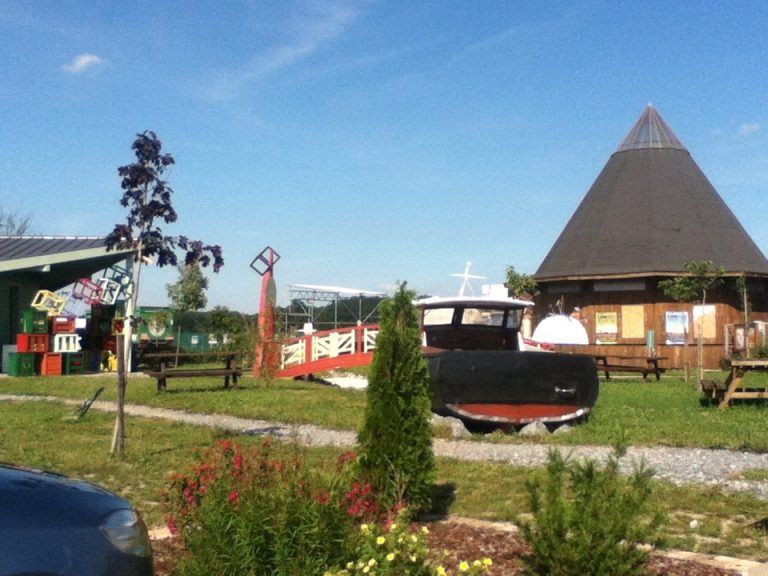Written by Chloé Gregg, Staff Writer
It’s the middle of January and champagne is flowing across the swampy fields of Notre-Dame-des-Landes, an agricultural commune outside the city of Nantes, France. The government’s project to construct a new airport on the West coast of France has been abandoned, putting an end to over 50 years of heated debate. Environmentalists and local farmers cheer and welcome the announcement as a new victory over the exploitative force of current-day globalization. Amongst them, a group of anarchists who have illegally occupied the land in protest against the airport. The ‘Zadistes’ (activists for the ZAD, Zone to Defend) see this as an opportunity to introduce a new project – a social, environmental and agricultural experiment for people who wish to stay on the Notre-Dame-des-Landes or NDL.
The demand for new forms of communal life is no revolutionary phenomenon. Since the first peace movements of the 1970s swept across Western societies, a growing number of people have involved themselves in a variety of projects seeking to re-build eroded social ties by living in small, close-knit groups.
Some groups have established what is called ‘egalitarian’ or ‘intended’ communities, such as ‘Twin Oaks’ in rural Virginia, USA, where land, labor, and income is shared equally between all members of the community. Working tasks are structured, but in no way imposed. Instead, it is the sense of common responsibility and belonging that encourages members to carry out their duties.
Another expression of collective living that is flourishing today, in response to housing shortages and expensive accomodation; is co-housing. With private rooms and houses arranged around common spaces and facilities, these small networks offer closer ties between neighbors, while maintaining a larger degree of individual agency and privacy. Unlike the former example, its members aren’t pressured to share a common ideology or philosophy.
With the principles of sustainability and cooperation at their core, these alternative communities can take on many forms. They may reject any sign of organizational hierarchy out of due consideration for social equality. They may prefer a semi-autonomous status in order to maintain bonds with the wider economy, e.g. by selling the surplus of their production on local markets to finance agricultural equipment or land rental costs. Whatever their structure they aim to show an example of a functioning and fruitful life outside the current societal paradigm. They can lead us to a shift.
Despite these trends, most political authorities and media outlets try to downsize these movements by depicting their adherents as ‘marginals’ or ‘rebels’. A defensive response to their centralized governments is being questioned, to a hint that their nation-state architecture is nearing its expiry date. For now, the status quo is protected by their longer history and the pluralistic ignorance of those who still conform to the idea that the current model is the will of the majority. Yet as shown in the case of Notre-Dame-des-Landes, where about 300 people were living on the occupied grounds, a longing for true social reconnection is present across many societal groups. The experience of loneliness is in fact so wide-spread, with 72% of Americans having reported it as occurring at least once a week, that medical doctors and physicians are calling it an “invisible epidemic”. This solitude has exacerbated the feeling of disenchantment within the system. A feeling that echoes across all levels of the social strata.
From freshly-graduated urban university students to third generation farmers, the opportunity to test a lifestyle outside the current neoliberal structure has attracted people from all walks of life. From emotional isolation emerges a desire to re-instigate new links with others. A desire to put an end to all the great evils of unregulated capitalism and prevent them from leading to further individual disillusionment and social alienation.

Photo by Elizabeth Lies
It might be decades-long exposure to capitalist propaganda that has convinced the vast majority of us that the return to a simpler life, with a less wide array of consumer choices, is too difficult to achieve or is simply undesirable. Not even Piketty’s bestselling Capital in the 21st Century managed to move us beyond the social destruction we have created in the pursuit of the current economic model. Whatever the reason for our stubbornness, it is time to think and act differently.
We must fight the system’s resistance to change by setting examples. We must grant the 300 adults and children demanding the right to remain on the Notre-Dame-des-Landes the opportunity to show us the worth of an alternative life. We must let them demonstrate its benefits and encourage them in their innovative attempts to happiness. Through examples, the so-called ‘outsiders’ may be able to convince even the most hardcore Black Friday shoppers that the simpler things in life do leave us feeling happier and complete. Through experience, they stand a chance of convincing us that their minimalist lifestyle is desirable.
Amongst the residents of the ZAD that celebrated the cancellation of the airport that foggy winter morning, few had imagined they’d be surrounded by such a large crowd of supporters. For many, their presence in Notre-Dame-des-Landes was intended as a mere visit. A brief glimpse at life without the constant soundtrack of YouTube advertisements and the endless queues of mass-distribution supermarkets. Yet quite rapidly, these visits became part of the permanent resettlement within a wind-powered self-sufficient community.
If the facts on youth unemployment, urban crowding, the soaring use of prescription medication and rapid environmental destruction are not enough to weaken your belief in the neoliberal dream, then let the alternative communities show us what we’re missing out on.
There’s a diverse set of sustainable community models out there, so take a look at some examples listed below (maybe you’ll find inspiration towards building your own):
http://www.thefec.org/communities/
https://www.towards-sustainability.co.uk/issues/built/suscom.html
Below you can find a gallery of photos from an Emmaus community in Lescar, France, taken by our Head Editor:















No Comments